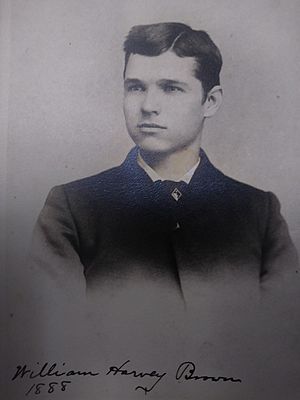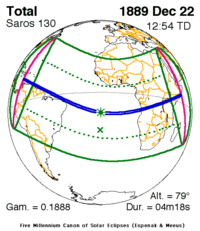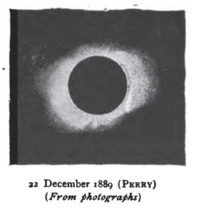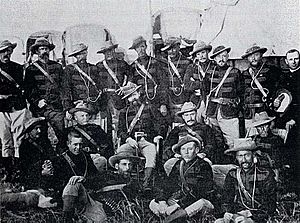William Harvey Brown facts for kids
Quick facts for kids
William Harvey Brown
|
|
|---|---|

Brown in 1888
|
|
| Mayor of Salisbury | |
| In office 1909-1910 |
|
| Personal details | |
| Born | August 22, 1862 Des Moines, Iowa, U.S. |
| Died | April 5, 1913 (aged 50) Salisbury, Company Rhodesia (now Harare, Zimbabwe) |
| Nationality | American, later naturalised British citizen |
| Occupation | Naturalist, soldier, local politician |
| Military service | |
| Allegiance | |
| Service | British South Africa Company |
| Years of service | 1893–1897 |
| Battles/wars | First Matabele War Second Matabele War |
William Harvey Brown (born August 22, 1862 – died April 5, 1913) was an American naturalist. A naturalist is someone who studies nature, including plants and animals. Brown later moved to a country in Africa called Rhodesia, which is now Zimbabwe.
While studying at the University of Kansas, Brown volunteered at the National Museum of Natural History. He went on trips to collect animal and plant samples in the United States. Later, while working for the Smithsonian Institution, he joined an expedition to the Belgian Congo (a country in Africa) to watch a solar eclipse.
Brown collected many different types of specimens for the museum. Because he was so good at finding interesting things, people called him "Curio Brown." After the eclipse trip, Brown stayed in South Africa. He joined an expedition in 1890 that helped claim a new area called Mashonaland for the British South Africa Company. He also fought in two wars, the First Matabele War and the Second Matabele War. After these wars, he was given a lot of land in Rhodesia.
Brown was hurt during the 1896-97 rebellion in Mashonaland. He went back to the U.S. for a short time and wrote a book about his adventures. He then returned to Rhodesia. There, he was elected to the Salisbury city council and even became the mayor for a while. He also served in the government of Southern Rhodesia.
Early Life and Studies
William Harvey Brown was born on August 22, 1862, in Des Moines, Iowa. He went to public schools in his hometown. After that, he studied at the University of Kansas in Lawrence.
At university, he studied natural history. He earned a bachelor of science degree. In 1886, he was invited to join the National Museum of Natural History as a volunteer. He went on a trip to Montana to collect skins and skeletons of bison. Later, he collected more specimens, including two bison, for the University of Kansas museum. After graduating, Brown joined the natural history department at the Smithsonian Institution.
Journey to See an Eclipse
Brown joined a U.S. government trip to the Belgian Congo to observe the solar eclipse of December 22, 1889. He was allowed to go along to collect natural history samples for the National Museum.
The expedition started on October 16, 1889, on a ship called the USS Pensacola. On the way, they stopped at the Azores islands. There, Brown collected samples of fish and seashells with help from the ship's crew. Brown traveled with the expedition to the Congo, stopping at places like Freetown, Sierra Leone; Elmina, Ghana; Angola; Cape Town, South Africa; St Helena; and Ascension Island.
What Brown Collected
Brown's collections from this trip arrived back at the National Museum in June 1890. He had collected 33 mammals from 16 different types of animals. He also found over 100 molluscs (like snails and clams) and 250 different kinds of insects. Most of these were new to the museum's collection.
He also sent back 16 types of freshwater fish from the Quanza River. He collected many saltwater fish too. Some of these were found in an old canoe discovered at sea. Brown also collected many birds. He gathered some geological samples (rocks and minerals) and cultural items like idols, pottery, and baskets. Because he was so good at finding and collecting these items, he earned the nickname "Curio Brown."
After the eclipse trip, Brown stayed in South Africa to collect more specimens. On April 10, 1890, he joined the British South Africa Company's Pioneer Corps. He went with a group of 200 white men and 400 African men to Mashonaland. This area became part of the company's land.
Brown continued his work as a naturalist. The company helped him send his collections to Kimberley for free. From there, the South African government railway also carried them for free to Cape Town. His collections included live tortoises and chameleons. He also sent rock samples from the Kimberley Diamond Mines to the National Museum. Other samples went to the Cape Town Museum.
Life in Rhodesia
Brown fought in the First Matabele War from 1893 to 1894. Because of his service, he was given about 13,000 acres of land in what became Rhodesia. He was seriously hurt while fighting against Shona rebels during the Second Matabele War. After this, he went back to the U.S. In 1899, he wrote a book about his experiences called On the South African Frontier.
Brown later returned to Rhodesia and lived on his farm. It was about 5 miles outside of Salisbury. He became a British citizen. He served on the city council of Salisbury and was the mayor from 1909 to 1910. He was also a member of several important groups, including the Chamber of Mines and the Mashonaland Farmers' Association. Brown also served in the Southern Rhodesian Legislative Council from 1909 to 1911. He passed away on April 5, 1913, in Salisbury. People say that Brown "helped to found" Rhodesia.




